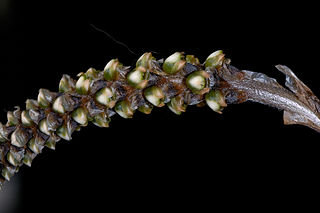
Aa is a genus of plants of the family Orchidaceae.

Ecuador is divided into 24 provinces. The provinces of Ecuador and their capitals are:

Santa Ana de los Cuatro Ríos de Cuenca, commonly referred to as Cuenca, is the capital and largest city of the Azuay Province of Ecuador. Cuenca is located in the highlands of Ecuador at about 2,560 metres above sea level, with an urban population of approximately 329,928 and 661,685 inhabitants in the larger metropolitan area.
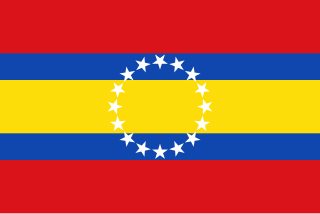
Loja Province is one of 24 provinces in Ecuador and shares its southern border on the west with El Oro Province, on the north with El Azuay, and on the east with Zamora-Chinchipe. Founded on its present site in 1548 by Captain Alonso de Mercadillo (Spanish), the site had been previously moved and rebuilt from La Toma due to earthquakes. It also is named as "Cuxibamba Valley", from the Quichua language, which means the "Smiley Valley".

Zamora Chinchipe, Province of Zamora Chinchipe is a province of the Republic of Ecuador, located at the southeastern end of the Amazon Basin, which shares borders with the Ecuadorian provinces of Azuay and Morona Santiago to the north, Loja and Azuay to the west, and with Peru to the east and south. The province comprises an area of approximately 10,456 km² and is covered with a uniquely mountainous topography which markedly distinguishes it from the surrounding Amazonian provinces. Zamora-Chinchipe is characterized and largely identified by its mining industry; indigenous ethnic groups with a rich archaeological legacy; its biodiversity; and its niche and tourist attractions, which include a number of waterfalls well-noted for their beauty. The province takes its name from the bureaucratic fusion of the Zamora and Chinchipe cantons. The provincial capital is the city of Zamora.
Amomyrtella is a genus of flowering plants in the myrtle family, Myrtaceae, first described as a genus in 1956. It is native to South America, where it is distributed from Ecuador to Argentina.
- Amomyrtella guilii(Speg.) Kausel, Ark. - S Bolivia, NW Argentina
- Amomyrtella irregularis(McVaugh) Landrum & Morocho - Loja Province in Ecuador

Gualaceo, nicknamed “El Jardin del Azuay”, is a canton in the sierra region of Ecuador in the Azuay Province. It is located 35 km east from the city of Cuenca and is one of the biggest cities in Azuay.
Astragalus bidentatus is a species of plant in the family Fabaceae. It is found only in Ecuador in two locations in the south above the timberline in the Azuay and Cañar provinces. Its natural habitat is subtropical or tropical high-altitude grassland. No specimens have been taken since 1945 and none are contained in museums. It is most commonly found in the month of July.

Dasyphyllum is a genus of flowering plants in the family Asteraceae. It is distributed in South America, with several species in southeastern Brazil.
Kingianthus is a genus of flowering plants in the family Asteraceae.
Monactis is a genus of South American flowering plants in the tribe Heliantheae within the family Asteraceae.

Senecio iscoensis or Aetheolaena senecioides is a flowering plant in the aster family. It is found only in subtropical and tropical dry shrubland in Ecuador. It is threatened by habitat loss.
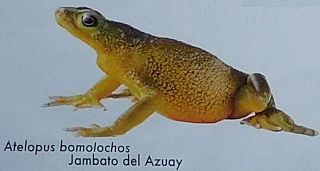
Atelopus bomolochos, the Azuay stubfoot toad or Cuenca jambato frog, is a species of toad in the family Bufonidae. It is endemic to southern Ecuador and known from Cordillera Oriental in the Azuay, Cañar, and Loja Provinces.

The Ecuadorian tapaculo or El Oro tapaculo is a small passerine bird belonging to the genus Scytalopus, a genus of tapaculos. It is restricted to a small area in south-western Ecuador and was not described until 1997.
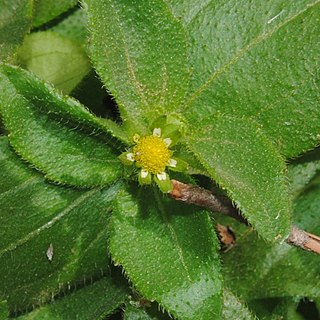
Jaegeria is a genus of flowering plants in the family Asteraceae found from Mexico to South America. The name commemorates Georg Friedrich von Jaeger.
Chrysactinium is a genus of South American flowering plants in the family Asteraceae.
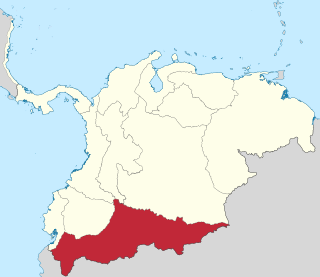
Azuay Department was created with the 1824 reform of the subdivisions of Gran Colombia.
Miss Ecuador 2012, the 62nd Miss Ecuador pageant held at Puerto Lucía Yacht Club, La Libertad, Santa Elena, Ecuador on March 16, 2012. Claudia Schiess from Galápagos crowned to her successor as Miss Ecuador 2012, Carolina Aguirre from Guayas. The winner of Miss Ecuador represented her country at Miss Universe 2012.
Hypericum aciculare is a shrub in the genus Hypericum, in the section Brathys. It is an accepted name according to The Plant List and Tropicos.
Stenocercus festae, also known commonly as Peracca's whorltail iguana and Peracca's whorl-tailed iguana, is a species of lizard in the family Tropiduridae. The species is endemic to Ecuador.












